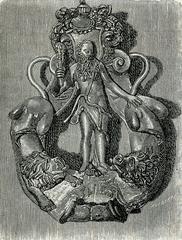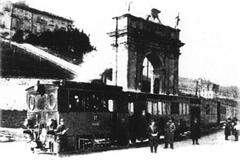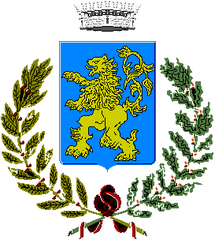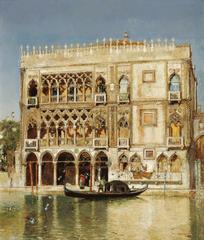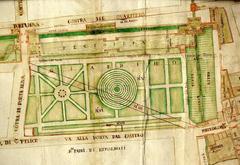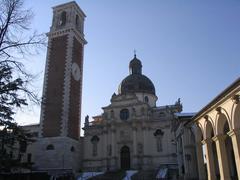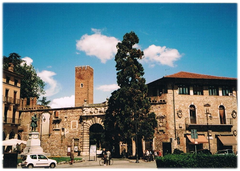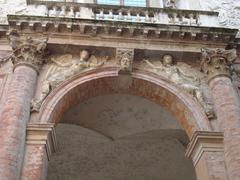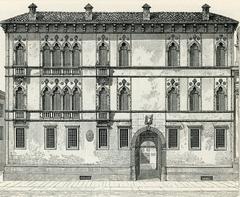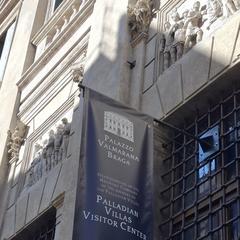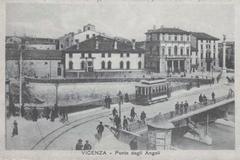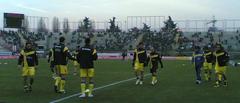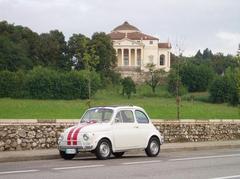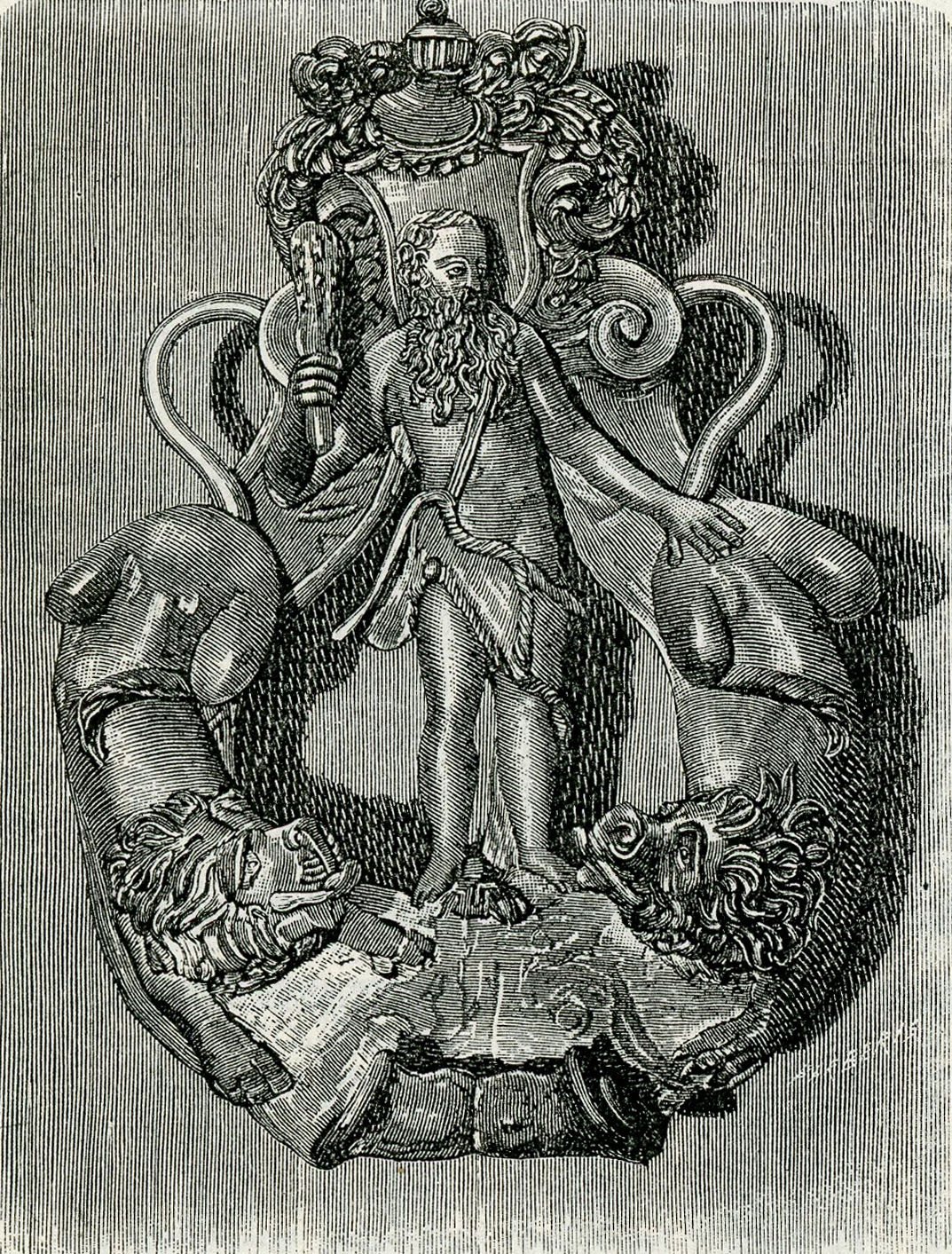
Palazzo Loschi Zileri Dal Verme Vicenza Italy Visiting Hours Tickets and Historical Sites Guide
Date: 14/06/2025
Introduction to Palazzo Loschi Zileri Dal Verme and Its Historical Significance
Nestled in the historic city of Vicenza, Italy, Palazzo Loschi Zileri Dal Verme stands as a distinguished landmark embodying centuries of noble heritage, architectural grandeur, and artistic mastery. This neoclassical palazzo, located prominently on Corso Palladio and also known as Villa Zileri Motterle in its country estate form, offers visitors a rare opportunity to immerse themselves in the refined tastes and cultural currents of Venetian aristocracy. From its origins in the 13th century with the Loschi family to its 18th-century transformation under the patronage of Niccolò Loschi and celebrated artist Giambattista Tiepolo, the palazzo showcases a harmonious blend of Baroque and Neoclassical styles, adorned with frescoes that vividly depict allegorical and mythological themes reflective of the Venetian Enlightenment. Visitors can explore not only the palazzo’s exquisite interiors—featuring elegant stuccoes, woodcraft, and period furnishings—but also its lush historic park, home to rare botanical specimens and monumental trees, including the nationally protected swamp cypress.
Understanding the palazzo’s layered history is essential; it has witnessed the passage of noble families such as the Dal Verme and Zileri dynasties and historic moments including visits by King Vittorio Emanuele II. Today, it functions both as a private residence and a cultural hub that opens to the public during special events and guided tours, offering an intimate look into Vicenza’s aristocratic past. Practical visitor information such as visiting hours, ticket options, accessibility accommodations, and nearby attractions including the Teatro Olimpico, Basilica Palladiana, and Villa La Rotonda are vital for planning an enriching experience.
This comprehensive guide will cover all aspects of visiting Palazzo Loschi Zileri Dal Verme—from historical context and artistic highlights to tips on accessibility and travel—ensuring that travelers and cultural enthusiasts alike can fully appreciate one of Vicenza’s most treasured historical sites. For more details, visitors are encouraged to consult the official Villa Zileri website and the Vicenza Tourism Official Site for updated information and ticket bookings (Il Giornale di Vicenza, Artribune, Veraclasse).
Table of Contents
- Historical Overview
- Architectural and Artistic Highlights
- Visiting Palazzo Loschi Zileri Dal Verme: Hours, Tickets & Tours
- Accessibility and Visitor Tips
- Nearby Attractions in Vicenza
- Frequently Asked Questions (FAQ)
- How to Get There
- Conclusion & Call to Action
Discover Palazzo Loschi Zileri Dal Verme in Vicenza: Your Complete Visiting Guide
Nestled in the heart of Vicenza, Palazzo Loschi Zileri Dal Verme stands as a captivating testament to centuries of noble history, exquisite architecture, and artistic brilliance. This historic palazzo is a must-visit for travelers interested in Vicenza historical sites, offering a unique blend of feudal heritage, Baroque and Neoclassical design, and breathtaking frescoes by the renowned Giambattista Tiepolo. Whether you’re planning your visit or simply exploring from afar, this guide covers everything you need to know — from visiting hours and ticket information to highlights of the palazzo’s art, park, and cultural significance.
Table of Contents
- Historical Overview
- Architectural and Artistic Highlights
- Visiting Palazzo Loschi Zileri Dal Verme: Hours, Tickets & Tours
- Accessibility and Visitor Tips
- Nearby Attractions in Vicenza
- Frequently Asked Questions (FAQ)
- How to Get There
- Conclusion & Call to Action
1. Historical Overview
Origins and Early Ownership
The origins of Palazzo Loschi Zileri Dal Verme are deeply rooted in Vicenza’s feudal past. Documented since the 13th century, the Loschi family rose to prominence through strategic land acquisitions, notably obtaining the Biron estate in Monteviale in 1436 through an exchange with the Benedictine monastery of Ss Felice e Fortunato. This estate laid the foundation for the villa and later the palazzo (Il Giornale di Vicenza).
Architectural Evolution and Artistic Patronage
By the 17th century, the estate had evolved significantly, reflecting the Loschi family’s growing influence. The villa was transformed extensively in the 18th century, especially under Niccolò Loschi, who celebrated the family’s elevation to Venetian counts in 1729 by commissioning Giambattista Tiepolo’s iconic fresco cycle. Esteemed architects Francesco Muttoni and Ottone Calderari further shaped the villa’s Baroque and Neoclassical character (Le Storie di Monteviale).
The Loschi, Dal Verme, and Zileri Dynasties
After the Loschi family’s extinction in the mid-19th century, the palazzo passed to the Dal Verme family, and later to the Zileri lineage. The last owner from this dynasty maintained the estate until the 1960s, preserving its aristocratic legacy and hosting distinguished guests, including Prince Umberto of Savoy and King Vittorio Emanuele II (Il Giornale di Vicenza).
2. Architectural and Artistic Highlights
Interiors and Frescoes
The palazzo’s interiors showcase Ottone Calderari’s neoclassical design, highlighted by a soaring piano nobile salon adorned with chiaroscuro frescoes and elegant grey hues. Rooms including the dining area, fumoir, and concealed kitchen feature French-inspired furnishings, precious paintings, and valuable bronzes — a deliberate homage to Versailles’ opulence.
Tiepolo’s frescoes embody the cardinal virtues with a compelling mix of drama and irony, reflecting the Venetian Enlightenment’s cultural currents (Le Storie di Monteviale).
The Historic Park
Surrounding the palazzo is a lush park home to rare native flora and monumental trees like the swamp cypress, a national arboreal monument. The grounds support diverse wildlife, offering visitors a serene natural retreat just outside Vicenza’s urban center.
3. Visiting Palazzo Loschi Zileri Dal Verme: Hours, Tickets & Tours
Visiting Hours
- Monday to Sunday: 10:00 AM – 5:00 PM
- Friday: 08:30 AM – 12:30 PM (afternoon closed)
Tickets
- General Admission: €10
- Reduced (students, seniors): €7
- Children under 12: Free
- Guided tours are available and recommended for deeper insight.
Tickets can be purchased online via the official website or onsite at the entrance.
Guided Tours and Special Events
Guided tours showcase the palazzo’s art, architecture, and history, with expert guides highlighting key frescoes and hidden features. The palazzo also hosts cultural events and high-profile auctions, providing unique experiences for visitors.
4. Accessibility and Visitor Tips
The site is wheelchair accessible with advance booking to ensure full access. Visitors are advised to wear comfortable footwear due to historic flooring.
Parking is available nearby with options for both cars and bicycles. Visitors planning to photograph the interiors should check photography policies in advance.
5. Nearby Attractions in Vicenza
Combine your visit with nearby Vicenza landmarks such as:
- Teatro Olimpico
- Basilica Palladiana
- Villa La Rotonda
These sites enrich your understanding of Vicenza’s rich architectural heritage.
6. Frequently Asked Questions (FAQ)
Q: What are the ticket prices for Palazzo Loschi Zileri Dal Verme? A: General admission is €10; reduced tickets at €7; children under 12 enter free.
Q: Are guided tours available? A: Yes, guided tours are offered daily and are recommended.
Q: What are the visiting hours? A: Open daily from 10:00 to 17:00, with Friday mornings only.
Q: Is the palazzo accessible for visitors with disabilities? A: Yes, with advance booking.
Q: Is photography allowed inside? A: Photography is permitted in designated areas; please inquire on arrival.
Q: How do I get to Palazzo Loschi Zileri Dal Verme? A: Located near Vicenza city center; reachable by car, public transport, or bike.
7. How to Get There
Address: Via Biron, Monteviale, Vicenza, Italy
Contact: +39 351 5345013 | [email protected]
Visitors can reach the palazzo by car (parking nearby), bus, or bike. For detailed directions, visit the official Vicenza tourism site.
8. Conclusion & Call to Action
Palazzo Loschi Zileri Dal Verme offers an unforgettable journey through Vicenza’s aristocratic past, artistic achievements, and natural beauty. Plan your visit today to explore one of Vicenza’s most treasured historical sites.
For the latest updates, special events, and ticket bookings, follow us on social media and download the Audiala app for an enhanced visitor experience. Don’t miss this iconic piece of Veneto’s heritage!
Visuals and Media: High-quality images of the palazzo’s façade, Tiepolo frescoes, interior salons, and the historic park are recommended to accompany this guide, with optimized alt text such as “Palazzo Loschi Zileri Dal Verme Vicenza façade” and “Giambattista Tiepolo frescoes at Palazzo Loschi Zileri Dal Verme.” A map and virtual tour links can be added on the official website for visitor convenience.
External Links:
Thank you for choosing Palazzo Loschi Zileri Dal Verme as part of your Vicenza adventure!
Introduction
Palazzo Loschi Zileri Dal Verme stands as a remarkable neoclassical landmark in Vicenza, steeped in history and artistic richness. Visitors to this architectural gem on Corso Palladio can explore its layered past, exquisite craftsmanship, and connection to Italy’s national heritage. This guide provides not only an in-depth look at the Palazzo’s architectural and artistic significance but also practical information for planning your visit, including visiting hours, ticketing, accessibility, and nearby attractions.
Architectural Evolution and Layout
Urban Setting and Structure
Palazzo Loschi Zileri Dal Verme is a neoclassical gem situated on Corso Palladio, the principal thoroughfare of Vicenza. Its urban context is significant: Corso Palladio is lined with some of the city’s most important Renaissance and neoclassical buildings, and the Palazzo’s façade contributes to this architectural dialogue (Artribune). The building is notable for its layered history—remarkably, it is described as “a palace within a palace,” referencing the integration of earlier structures into the current 18th-century design. This palimpsest effect is visible in the building’s plan and in the variety of decorative and structural elements encountered as one moves through its spaces.
Façade and External Features
The façade of Palazzo Loschi Zileri Dal Verme is a study in neoclassical restraint and elegance. It is characterized by a tripartite division, with a central section that projects slightly forward, crowned by a pediment and adorned with an imposing family crest (Villa Zileri). The use of symmetry, classical pilasters, and proportioned windows reflects the influence of Palladian principles, though the building itself is later than Palladio’s era. A unique historical detail is the visible cannonball embedded in the façade—a remnant from the 1805 conflict between France and Austria, which serves as a tangible marker of the building’s lived history (Artribune).
Interior Layout and Spatial Organization
Inside, the Palazzo unfolds as a sequence of grand halls, intimate salons, and richly decorated corridors. The spatial organization is designed to impress and guide visitors through a progression of increasingly elaborate spaces, a hallmark of aristocratic residences of the period. The atrium features a marble inscription commemorating the stay of King Vittorio Emanuele II in 1866, further anchoring the building in the national history of Italy (Artribune).
Artistic Highlights and Decorative Elements
Woodwork and Furnishings
One of the most celebrated features of the Palazzo is its extraordinary wooden craftsmanship. The “stupefacente manufatto ligneo” (astonishing wooden artifact) is singled out as a highlight, though the building as a whole is replete with finely crafted woodwork, from doors and paneling to furniture. These elements reflect the refined taste of the Loschi Zileri Dal Verme family and the skill of local artisans (Artribune).
The interiors are further enriched by a curated collection of period furnishings and objets d’art, assembled by generations of owners with a keen eye for quality and historical resonance. The result is an environment that feels both opulent and deeply personal, a “scrigno neoclassico” (neoclassical jewel box) that rewards close inspection (Ariannadisegnadipingecrea).
Artistic Collections and Decorative Schemes
The Palazzo’s rooms are adorned with a variety of artworks, including paintings, sculptures, and decorative objects. While specific attributions are not always documented, the overall effect is one of cultivated taste and artistic ambition. The decorative schemes often incorporate neoclassical motifs—acanthus leaves, classical figures, and mythological references—executed in stucco, fresco, and painted panels.
Of particular note is the integration of art and architecture: the visual staging of rooms, the placement of artworks in relation to windows and doors, and the harmonious color palettes all contribute to a sense of unity and grandeur. This approach echoes the broader Veneto tradition of Gesamtkunstwerk, or total work of art, in which architecture, painting, and decorative arts are conceived as an integrated whole (Villa Zileri).
Historical Layers and Artistic Testimonies
The Palazzo’s artistic significance is amplified by its historical layers. The visible cannonball and commemorative inscriptions are not merely curiosities; they are integral to the building’s narrative, linking its artistic program to the broader currents of European and Italian history. The presence of these elements invites visitors to reflect on the intersection of art, architecture, and lived experience.
Architectural Context and Influences
Relationship to Palladianism and Vicentine Traditions
While the Palazzo is not a work of Andrea Palladio, its design is deeply informed by the Palladian tradition that defines much of Vicenza’s architectural identity. The use of classical orders, symmetry, and proportional relationships speaks to the enduring influence of Palladio and his followers. The architect Ottone Calderari, who designed both the city Palazzo and the family’s country villa, was a key figure in the late 18th-century Vicentine architectural scene (Villa Zileri). His work bridges the gap between the high Renaissance and the neoclassical revival, blending innovation with respect for tradition.
Integration of Earlier Structures
The Palazzo’s “palace within a palace” configuration is a testament to the adaptive reuse of earlier buildings. This layering is not only architectural but also symbolic, reflecting the continuity of family and civic identity across centuries. The careful integration of older elements—whether structural walls, decorative fragments, or spatial arrangements—adds depth and complexity to the visitor experience (Artribune).
Conservation, Restoration, and Contemporary Use
Restoration Efforts
The Palazzo has undergone significant restoration in recent years, particularly as it has been adapted for use as an event venue and luxury hospitality space under the name “No Other Place.” These interventions have focused on preserving the building’s historical character while upgrading its infrastructure to meet contemporary standards. The restoration has been guided by principles of minimal intervention and reversibility, ensuring that original materials and decorative schemes are retained wherever possible (Artribune).
Adaptive Reuse and Public Access
While still privately owned, the Palazzo is occasionally open to the public for special events, such as the FAI (Fondo Ambiente Italiano) heritage days. These openings provide rare opportunities for visitors to experience the building’s architectural and artistic treasures firsthand. The adaptive reuse of the Palazzo as a venue for cultural and social events ensures its continued relevance and vitality, while also supporting ongoing conservation efforts (Artribune).
Visiting Information
Visiting Hours and Days Open
Palazzo Loschi Zileri Dal Verme is open to the public primarily during special events and heritage days, such as FAI Open Days. Regular visiting hours are not available year-round due to its private ownership and function as an event venue (“No Other Place”). Visitors are encouraged to check the official event calendar or contact the venue ahead of time for visiting opportunities.
Tickets and Booking
Admission is typically free during FAI heritage days or special public events; however, some private tours or events may require advance booking or a fee. It is recommended to book tickets online in advance when available, especially for guided tours or special exhibitions.
Accessibility
The Palazzo strives to accommodate visitors with disabilities wherever possible. Due to the historic nature of the building and its layered architecture, some areas may pose accessibility challenges. Visitors requiring assistance or specific accommodations should contact the venue in advance to ensure a comfortable visit.
Travel Tips and Getting There
Palazzo Loschi Zileri Dal Verme is located on Corso Palladio, Vicenza’s main street, easily accessible by foot from the city center or by public transport. The best time to visit is during spring and fall when weather is pleasant and cultural events are frequent. For drivers, nearby parking options are available, but public transport and walking are recommended for convenience.
Nearby Attractions in Vicenza
While visiting the Palazzo, take the opportunity to explore other Vicenza historical sites such as the Basilica Palladiana, Teatro Olimpico, and Villa La Rotonda. The city offers rich Renaissance and neoclassical architecture, charming squares, and museums that complement the Palazzo’s heritage.
Special Events and Guided Tours
Occasionally, guided tours are offered during open days or by arrangement, providing deeper insights into the Palazzo’s history, architecture, and art collections. Check the official website or local tourism offices for announcements of upcoming events and tours.
Artistic and Architectural Significance in Numbers
- Construction period: Primarily 18th century, with earlier structural elements incorporated.
- Façade: Tripartite neoclassical design, featuring a prominent family crest and historical cannonball.
- Key architects: Ottone Calderari (city and country residences), Antonio Caregaro Negrin (19th-century interventions at the family’s villa).
- Notable events: Cannonball strike (1805), visit of King Vittorio Emanuele II (1866).
- Current use: Private residence, event venue (“No Other Place”), occasional public access during heritage events.
Visitor Experience: Architectural and Artistic Highlights
- Façade inspection: Look for the embedded cannonball and the family crest—unique markers of the Palazzo’s history (Artribune).
- Atrium: Note the marble inscription commemorating the royal visit.
- Woodwork: Pay close attention to the doors, paneling, and furniture—exemplary of Vicentine craftsmanship.
- Art collections: While not a museum, the Palazzo’s rooms are filled with period artworks and decorative objects, offering a window into aristocratic taste.
- Spatial progression: Experience the sequence of rooms, designed to impress and guide visitors through a narrative of increasing grandeur.
Visuals and Media
Visitors and readers are encouraged to view online galleries and virtual tours where available. Photographs of the façade, interiors, and artistic details can enhance appreciation of the Palazzo’s beauty. Alt text for images should include keywords like “Palazzo Loschi Zileri Dal Verme Vicenza façade” and “neoclassical interiors Vicenza.” A map showing the Palazzo’s location on Corso Palladio is helpful for planning visits.
Frequently Asked Questions (FAQ)
Q: What are the visiting hours of Palazzo Loschi Zileri Dal Verme? A: The Palazzo is open to the public mainly during special events such as FAI heritage days. Regular visiting hours are not available. Check the official calendar for updates.
Q: How can I buy tickets for visiting the Palazzo? A: Tickets for special events or guided tours can usually be booked online or at the event. Many public openings are free.
Q: Is the Palazzo wheelchair accessible? A: Due to its historic architecture, some areas may not be fully accessible. Contact the venue in advance to arrange accommodations.
Q: Are guided tours available? A: Guided tours are occasionally offered during open days or by appointment. Check with local tourism offices or the Palazzo’s event listings.
Conclusion
Palazzo Loschi Zileri Dal Verme offers visitors a rare glimpse into Vicenza’s neoclassical heritage, enriched by layers of history, art, and architecture. Whether you are an architecture enthusiast, art lover, or cultural traveler, planning your visit around special events and open days will ensure a rewarding experience. Don’t miss the chance to explore its exquisite interiors, admire its historical markers, and immerse yourself in the legacy of this unique Vicenza historical site.
Plan your visit today and discover the timeless elegance of Palazzo Loschi Zileri Dal Verme.
For more information on Vicenza historical sites and visiting tips, explore our related articles and download the Audiala app for the latest event updates and guided tour options.
Villa Zileri: A Six-Century Journey Through Vicenza’s Historical Gem – Visiting Hours, Tickets, and Cultural Highlights
Introduction
Nestled in the picturesque countryside near Vicenza, Villa Zileri stands as a magnificent testament to six centuries of Italian nobility, art, and innovation. This article explores the rich cultural and historical heritage of Villa Zileri, practical visitor information including visiting hours and ticket options, and tips for making the most of your visit to one of Vicenza’s most cherished historical sites.
The Six Centuries of Villa Zileri: Stories of Nobility, Art, and Innovation
The Loschi Family and the Birth of the Estate
Villa Loschi Zileri Dal Verme, commonly known as Villa Zileri, originated in 1436 when Count Antonio Nicolò dei Loschi, a prominent Vicentine nobleman, acquired an 800 campi estate (approximately 280 hectares) near Vicenza. Initially an agricultural enterprise, the estate evolved into a symbol of the Loschi family’s status, hosting social gatherings and fostering artistic patronage (Villa Zileri - Storia).
The Tiepolo Frescoes: A Masterpiece of Venetian Rococo
In the early 18th century, the renowned artist Giambattista Tiepolo was commissioned to decorate the Salone d’Onore (Hall of Honor). His frescoes, considered masterpieces of Venetian Rococo, blend allegory and mythology, reflecting the Enlightenment spirit. Visitors today can admire these vibrant frescoes, preserved through expert restorations (Villa Zileri - Il Tiepolo).
The Grotta delle Conchiglie: A Baroque Wonder
The mid-17th century Grotta delle Conchiglie (Shell Grotto), commissioned by Count Alfonso Loschi, dazzles visitors with intricate shellwork and Baroque theatricality. This unique chamber served as a private retreat and social stage, reflecting the family’s flair for hospitality (Villa Zileri - Le meraviglie nascoste).
The Chapel of San Francesco: A 19th-Century Revival
The private chapel dedicated to San Francesco was redesigned in the 19th century by architect Caregaro Negrin under Countess Drusilla Loschi’s patronage. This space became central for family ceremonies and religious observances, blending tradition with modernity (Villa Zileri - Cappella di San Francesco).
The Zileri Inheritance and Botanical Curiosities
In the late 19th century, the estate passed to the Zileri family. Count Alessandro Zileri, a keen botanist and traveler, introduced exotic plants to the parklands and acquired a rare Viennese fortepiano by Tomaschek, still playable today (Villa Zileri - Storia). The park remains a biodiversity haven.
The Villa as a Cultural and Social Hub
Villa Zileri has historically hosted artists, intellectuals, and elites, with events ranging from balls to concerts. Its affiliations with the Associazione Dimore Storiche Italiane (ADSI), Associazione Ville Venete, and Fondo Ambiente Italiano (FAI) underscore its cultural significance (Villa Zileri - Convenzioni).
Restoration and Contemporary Use
Recent restorations have preserved Villa Zileri’s artistic and architectural heritage, integrating modern apartments and offices. The estate offers educational programs and guided tours, sustaining its role as a vibrant cultural landmark (Villa Zileri - Appartamenti e Uffici).
The Park and Its Natural Heritage
The villa’s park, combining formal gardens and natural landscapes, remains nearly original and is a sanctuary for diverse wildlife. Current owners emphasize environmental sustainability and public enjoyment (Villa Zileri - Parco).
Anecdotes of Accessibility and Community Engagement
Villa Zileri prioritizes accessibility, providing dedicated pathways for visitors with disabilities (advance booking required), guided tours, and educational activities. Discounts are available for cyclists and members of partner organizations (Villa Zileri - Visite e Info).
Legends and Local Folklore
The villa’s rich history has inspired legends of secret passages and hidden treasures, adding to its charm and inviting visitors to immerse themselves in centuries of stories (Villa Zileri - Storia).
Practical Visitor Information
Visiting Hours:
- Open Tuesday to Sunday, 9:00 AM – 6:00 PM
- Closed on Mondays and public holidays
Ticket Prices:
- Adults: €12
- Seniors (65+): €8
- Students (with valid ID): €6
- Children under 12: Free
- Group discounts available upon request
Tickets:
- Purchase online via the official Villa Zileri website or at the entrance
- Advance booking recommended, especially for guided tours and accessibility arrangements
Directions:
- Located approximately 10 km south of Vicenza city center
- Accessible by car via SS247; parking available on-site
- Public transport options include regional buses from Vicenza
Accessibility:
- Dedicated pathways and facilities available for visitors with mobility challenges (advance notice required)
Nearby Attractions:
- Basilica Palladiana (Vicenza city center)
- Villa La Rotonda
- Teatro Olimpico
Visuals and Media
Visitors and readers can explore the villa’s beauty through images and virtual tours available on the official website, featuring alt text such as “Villa Zileri Tiepolo Frescoes” and “Grotta delle Conchiglie Interior.” These visuals enhance appreciation of the site’s artistic and architectural treasures.
Frequently Asked Questions (FAQ)
Q1: How can I book a guided tour at Villa Zileri? A1: Guided tours can be booked online via the official website or by contacting the visitor center directly.
Q2: Is Villa Zileri suitable for children? A2: Yes, children under 12 enter free, and the park offers safe areas for family enjoyment.
Q3: Are pets allowed on the estate? A3: Pets are generally not allowed inside the villa or gardens, except for service animals.
Q4: Can I host private events at Villa Zileri? A4: Yes, the villa offers spaces for events; contact the management for availability and arrangements.
Q5: Are there any special events or exhibitions? A5: The villa regularly hosts cultural events; check the official website for the latest schedule.
Conclusion
Villa Zileri offers visitors an extraordinary journey through centuries of Italian history, art, and natural beauty. Whether you’re an art enthusiast, history lover, or nature admirer, the villa’s rich heritage and welcoming environment promise an unforgettable experience. Plan your visit today and immerse yourself in the allure of one of Vicenza’s most treasured historical sites.
Call to Action
For the latest updates, exclusive content, and visitor tips, follow Villa Zileri on social media and download the Audiala app to enhance your cultural exploration. Don’t forget to check related articles on Vicenza’s historical sites to enrich your travel itinerary!
Introduction
Villa Zileri Motterle, also known as Palazzo Loschi Zileri Dal Verme, is one of Vicenza’s most distinguished historical estates. Located just outside Vicenza in Biron di Monteviale, this elegant villa offers visitors a unique blend of art, architecture, and lush gardens. Whether you are planning your visit to explore the magnificent Tiepolo frescoes, stroll through the 19th-century English-style park, or attend cultural events, this comprehensive guide will provide you with all the essential information on Villa Zileri Motterle visiting hours, tickets, accessibility, and visitor tips.
Arrival and Accessibility
Villa Zileri Motterle is conveniently accessible by car, with direct access from the A4 Brescia-Padova motorway—exit at Vicenza and follow signs to Monteviale. Visitors arriving from Venice should take the A4 towards Brescia (Veraclasse). Ample parking is available for cars and buses, making it ideal for both individual travelers and groups (Villa Zileri Official).
For those using public transportation, Vicenza’s modern railway station offers connections to major Italian cities. Local urban buses provide direct service to Monteviale, ensuring easy access. International visitors can fly into Verona Catullo or Venice Marco Polo airports, both within an hour’s drive, with shuttle and train services connecting to Vicenza.
Villa Zileri Motterle is committed to accessibility. Although the historic building poses some limitations, a dedicated accessible route is available for visitors with reduced mobility. To ensure a smooth experience, advance booking for accessibility accommodations is required (Villa Zileri Official).
Villa Zileri Motterle Visiting Hours and Ticket Information
Opening Hours (Summer Season: April 1 – October 31, 2025)
- Monday to Thursday: 10:00 – 12:00 and 13:30 – 17:00
- Friday: 10:00 – 12:30 (closed in the afternoon)
- Saturday and Sunday: 10:00 – 17:00
The villa is closed on public holidays and may have altered hours during private events. Visitors should check the official website or contact the villa directly for the latest schedule (Villa Zileri Official).
Ticket Prices
- Adults: €10
- Reduced (students, seniors): €7
- Children under 12: Free
- Group rates and guided tours available upon request
Tickets can be purchased on-site or booked in advance by emailing [email protected] or calling +39 351 5345013. Advance booking is recommended, especially during peak tourist seasons.
Guided Tours and Visitor Flow
Guided tours are highly recommended to fully appreciate Villa Zileri Motterle’s rich history and artistic treasures. Tours usually commence in the villa’s renowned park, part of the Grandi Giardini Italiani circuit, featuring 19th-century English landscape design, centuries-old trees, and exotic botanical specimens (Veraclasse).
After exploring the gardens, visitors proceed to the main building to view the elegant interiors and the celebrated frescoes by Giambattista Tiepolo, highlighting the villa’s architectural evolution and artistic heritage.
The tour concludes with visits to the reconstructed Chiesetta di San Francesco and the Grotta delle Conchiglie, a shell grotto in the former lemon house.
Guided tours can be booked via email or phone, with special arrangements available for groups.
Highlights of the Visitor Experience
The Park and Gardens
The villa’s park is a tranquil haven showcasing 19th-century English garden artistry, with meandering gravel paths, artistic topiary, and a mix of ancient and exotic trees, some over 150 years old. The garden’s scenic viewpoints and benches invite leisurely exploration, especially vibrant during spring and early summer (Veraclasse).
The Interiors and Tiepolo Frescoes
Inside, the villa boasts grand rooms adorned with stuccoes, period furnishings, and some of Giambattista Tiepolo’s finest frescoes outside Venice. These 18th-century masterpieces depict allegorical and mythological scenes, noted for their luminosity and dynamic composition.
Photography without flash is generally permitted; however, tripods and flash photography are restricted to protect the artworks.
The Chiesetta di San Francesco and Grotta delle Conchiglie
The reconstructed 17th-century chapel provides insight into the spiritual life of the estate’s past residents, while the Grotta delle Conchiglie enchants visitors with its intricate shell decorations and cool ambiance.
Events, Rentals, and Amenities
Villa Zileri Motterle hosts a variety of cultural events, private functions, and business meetings, offering charming spaces for weddings, conferences, and exhibitions. Apartments and offices within the complex are available for short- or long-term rental (Villa Zileri Official).
On-site amenities include restrooms (with accessible facilities), a gift shop featuring books and local products, a seasonal café or refreshment area, and free Wi-Fi in designated spaces.
Practical Visitor Information
- Advance Booking: Recommended for guided tours and during peak seasons.
- Dress Code: Comfortable shoes for walking on gravel paths; modest attire appreciated in the chapel.
- Photography: Non-flash photography allowed; confirm restrictions with staff.
- Weather: Best enjoyed in clear weather; bring sun protection or an umbrella as needed.
- Accessibility: Notify the villa in advance to arrange accessible routes or assistance.
- Nearby Attractions: Villa Zileri serves as an excellent base for exploring other Palladian villas and nearby cities such as Padua (30 minutes), Verona (under an hour), and Venice (about 54 minutes) (Veraclasse).
Frequently Asked Questions (FAQ)
Q: What are Villa Zileri Motterle visiting hours? A: The villa is open from April 1 to October 31, 2025, Monday to Thursday 10:00–12:00 and 13:30–17:00, Friday 10:00–12:30, and weekends 10:00–17:00. It is closed on public holidays.
Q: How do I buy tickets for Villa Zileri Motterle? A: Tickets can be purchased on-site or reserved in advance by contacting [email protected] or calling +39 351 5345013.
Q: Are there guided tours available? A: Yes, guided tours are highly recommended and can be booked in advance for individuals or groups.
Q: Is Villa Zileri Motterle accessible for wheelchair users? A: Yes, the villa has a dedicated accessible route. Advance notice is required to arrange accommodations.
Q: Can I take photographs inside the villa? A: Non-flash photography is generally allowed; however, flash and tripods are prohibited to protect the artworks.
Suggested Visuals and Media
To enhance the visitor experience, we recommend including high-quality images of the villa’s exterior, the English-style gardens, Tiepolo frescoes, the Chiesetta di San Francesco, and the Grotta delle Conchiglie. Keyword-rich alt tags such as “Villa Zileri Motterle gardens in Vicenza” or “Giambattista Tiepolo frescoes at Villa Zileri” will improve SEO. A location map and links to virtual tours or video walkthroughs can also engage visitors planning their trip.
Related Resources
Conclusion and Call to Action
Villa Zileri Motterle offers a captivating journey through history, art, and nature, making it a must-visit destination for travelers interested in Vicenza historical sites. To make the most of your visit, plan ahead by checking Villa Zileri Motterle visiting hours and ticket options, book guided tours, and prepare for a memorable experience.
Download the Audiala app for personalized travel guides and up-to-date information on cultural sites like Villa Zileri Motterle. Follow us on social media for the latest news, events, and visitor tips.
For more details, visit the official Villa Zileri website or contact the villa directly via email at [email protected] or by phone at +39 351 5345013.
Summary and Final Tips for Visiting Palazzo Loschi Zileri Dal Verme
Palazzo Loschi Zileri Dal Verme stands as a remarkable embodiment of Vicenza’s rich cultural and architectural legacy, offering visitors an unparalleled journey through time marked by aristocratic grandeur, artistic brilliance, and natural beauty. Its exquisite interiors, highlighted by Giambattista Tiepolo’s masterful frescoes and refined neoclassical design, invite appreciation of the Venetian Enlightenment’s artistic sensibilities. The palazzo’s historic park enriches the experience with a serene setting of rare flora and monumental trees, while its storied past—interwoven with noble dynasties and significant historical events—adds depth and resonance to every visit.
For those seeking to explore Vicenza’s broader heritage, nearby landmarks such as the Teatro Olimpico, Basilica Palladiana, and Villa La Rotonda further complement the cultural itinerary. Visitors should plan their trips around guided tours and special events to gain comprehensive insights into the palazzo’s multifaceted history and artistic treasures. Accessibility considerations and visitor amenities ensure that the site remains welcoming to diverse audiences.
To stay informed on visiting hours, ticketing, and upcoming cultural activities, prospective visitors are encouraged to follow Palazzo Loschi Zileri Dal Verme through official channels, including the Villa Zileri website and Vicenza tourism portal. Utilizing tools such as the Audiala app can also enhance the visitor experience with personalized guides and real-time updates. Embrace the opportunity to uncover the timeless elegance and historical significance of this Vicentine jewel, and enrich your journey through Italy’s artistic heartland (Il Giornale di Vicenza, Artribune, Veraclasse).
References and Further Reading
- Il Giornale di Vicenza, 2024, Un Palazzo Come Versailles – Maxi Asta per la Collezione https://www.ilgiornaledivicenza.it/territorio-vicentino/vicenza/un-palazzo-come-versailles-maxi-asta-per-la-collezione-1.8957131
- Le Storie di Monteviale, 2023, Villa Zileri Dal Verme http://www.lestoriedimonteviale.it/luoghi-di-monteviale/villa-zileri-dal-verme/
- Villa Zileri Official Website, 2025, Villa Zileri Vicenza https://www.villazileri.com/villa-zileri-vicenza/
- Artribune, 2024, Storia Palazzo Loschi Zileri Dal Verme Vicenza https://www.artribune.com/progettazione/2024/03/storia-palazzo-loschi-zileri-verme-vicenza/
- Veraclasse, 2024, Visitare Villa Zileri a Vicenza sulle Tracce di Giambattista Tiepolo https://www.veraclasse.it/viaggi/visitare-villa-zileri-a-vicenza-sulle-tracce-di-giambattista-tiepolo/
- Vicenza Tourism Official Site, 2025, Turismo a Vicenza https://www.turismovicenza.it
